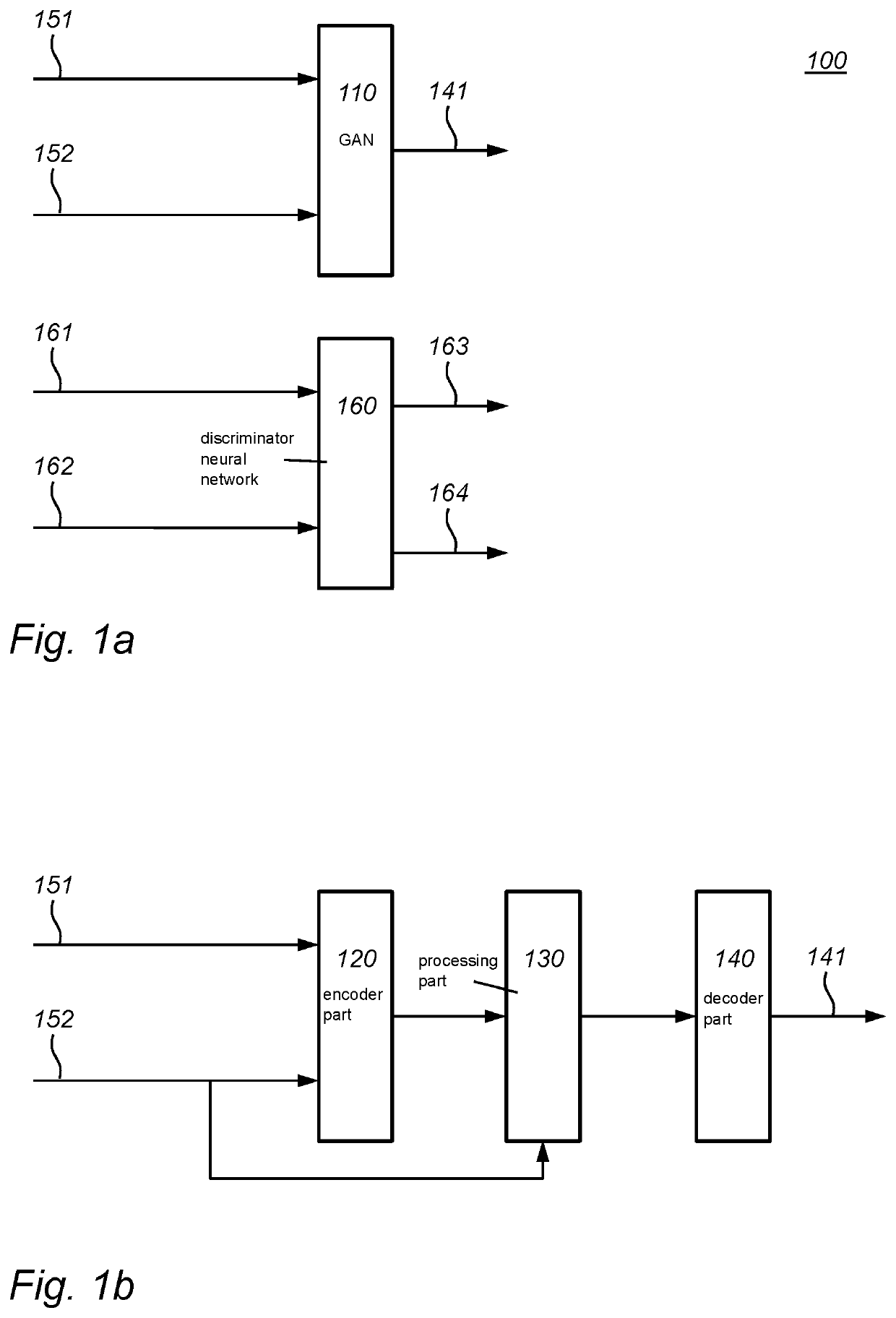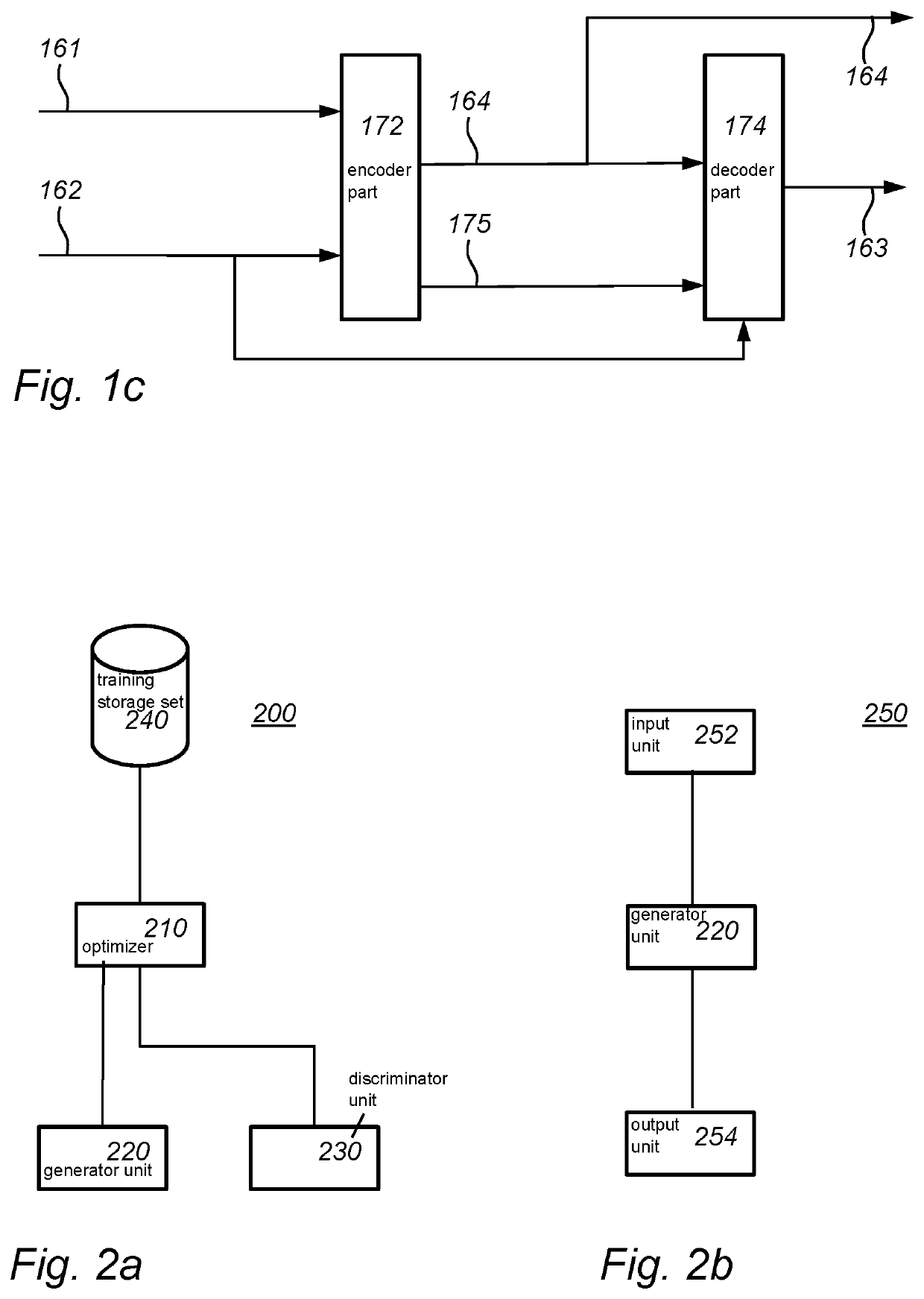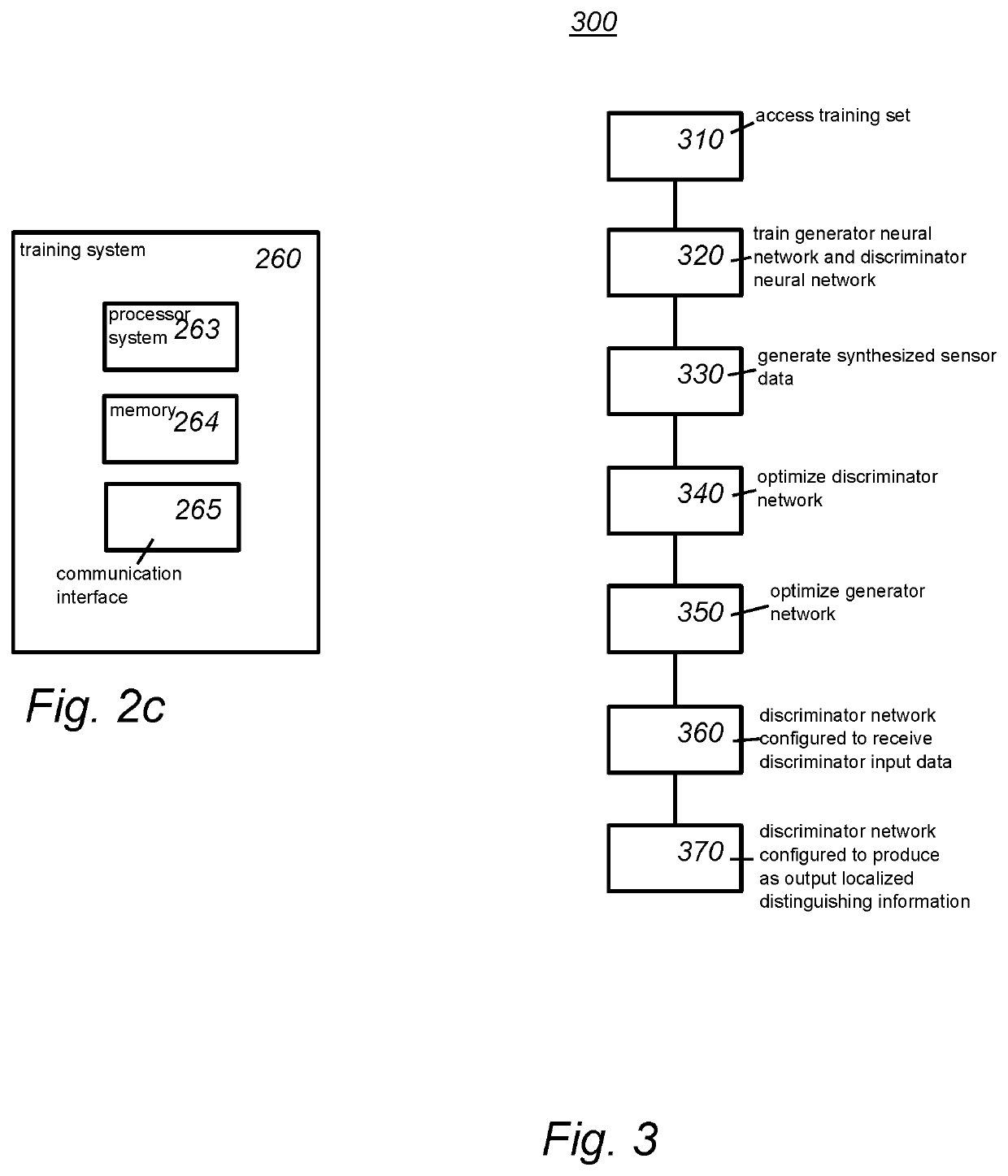Training a generator neural network using a discriminator with localized distinguishing information
a neural network and discriminator technology, applied in the field of training methods for training a generator neural network, can solve the problems of difficult to obtain the right kind or the right amount of training data, difficult to obtain additional training data, and little training data,
- Summary
- Abstract
- Description
- Claims
- Application Information
AI Technical Summary
Benefits of technology
Problems solved by technology
Method used
Image
Examples
Embodiment Construction
[0123]While the presently disclosed subject matter of the present invention is susceptible of embodiment in many different forms, there are shown in the figures and will herein be described in detail one or more specific embodiments, with the understanding that the present disclosure is to be considered as exemplary of the principles of the presently disclosed subject matter of the present invention and not intended to limit it to the specific embodiments shown and described.
[0124]In the following, for the sake of understanding, elements of embodiments are described in operation. However, it will be apparent that the respective elements are arranged to perform the functions being described as performed by them.
[0125]Further, the subject matter of the present invention that is presently disclosed is not limited to the embodiments only, but also includes every other combination of features described herein.
[0126]FIG. 1a schematically shows an example of an embodiment of a generator ne...
PUM
 Login to View More
Login to View More Abstract
Description
Claims
Application Information
 Login to View More
Login to View More - R&D
- Intellectual Property
- Life Sciences
- Materials
- Tech Scout
- Unparalleled Data Quality
- Higher Quality Content
- 60% Fewer Hallucinations
Browse by: Latest US Patents, China's latest patents, Technical Efficacy Thesaurus, Application Domain, Technology Topic, Popular Technical Reports.
© 2025 PatSnap. All rights reserved.Legal|Privacy policy|Modern Slavery Act Transparency Statement|Sitemap|About US| Contact US: help@patsnap.com



